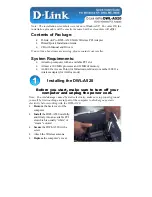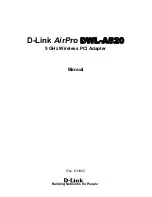
40
User's Guide HDSP AES-32
© RME
22. Connections
22.1 AES/EBU Inputs
The AES/EBU inputs are provided via 25 pin D-sub connectors with Tascam pinout (also used
by Digidesign). A digital breakout cable will provide 4 female (and 4 male) XLR connectors per
D-sub connector. Every input is transformer-balanced and ground-free. Channel status and
copy protection are being ignored.
The inputs can be used in any combination, e. g. it is sufficient to connect an input signal only to
input 3. In slave mode, this input is automatically being used as clock source. If more than one
signal is present, the one furthest left is being used as clock source, i. e. the active input with
the lowest number.
The HDSP AES-32 supports all currently known formats in the range of 32 kHz up to 192 kHz,
including sample multiplexing:
•
Single Wire: 16 channels 32 kHz – 192 kHz. 2 channels per AES wire. The effective sample
frequency equals the clock on the AES wire.
•
Double Wire: 8 channels 64 kHz – 192 kHz. 1 channel per AES wire. The effective sample
frequency is double the clock of the AES wire.
•
Quad Wire: 4 channels 128 kHz – 192 kHz. 1 channel via 2 AES wires. The effective sample
frequency is four times the clock of the AES wire.
Rearranging the formats Double and Quad Wire to Single Wire is lossless, the existing samples
are just re-ordered again. Information on the distribution of the samples in Double and Quad
Wire mode is found in chapter 22.2, AES/EBU Outputs.
The selection of the corresponding format is fully automated by the relation between input sig-
nal sample rate and the sample rate requested by the application. Example: If a 48 kHz AES
signal is detected at the input, and the audio software is configured to use a sample rate of 96
kHz, the hardware expects the input signal to be in Double Wire format. A ratio of 48 kHz to 192
kHz will activate Quad Wire mode. The hardware processes the sample multiplexing of the in-
put data. The number of input channels shown in TotalMix will be reduced to 8 or 4, so the cur-
rently active mode is easy to recognize.
Emphasis
AES/EBU and SPDIF can contain Emphasis information. Audio signals with Emphasis have a
strong high frequency boost and thus require a high frequency attenuation on playback.
An Emphasis indication on an input is lost as there exists no standardized interface on
computers to handle this information!
Pinout of the D-sub connector, Inputs
Signal In
1/2+
In
1/2-
In
3/4+
In
3/4-
In
5/6+
In
5/6-
In
7/8+
In
7/8-
D-Sub
24 12 10 23 21 9 7 20
GND is connected to pins 2, 5, 8, 11, 16, 19, 22, 25. Pin 13 is not connected.
Summary of Contents for Hammerfall HDSP AES-32
Page 5: ...User s Guide HDSP AES 32 RME 5 User s Guide HDSP AES 32 General...
Page 27: ...User s Guide HDSP AES 32 RME 27...
Page 28: ...28 User s Guide HDSP AES 32 RME...
Page 38: ...38 User s Guide HDSP AES 32 RME...
Page 39: ...User s Guide HDSP AES 32 RME 39 User s Guide HDSP AES 32 Connections and TotalMix...
Page 47: ...User s Guide HDSP AES 32 RME 47...
Page 69: ...User s Guide HDSP AES 32 RME 69 User s Guide HDSP AES 32 Technical Reference...
















































